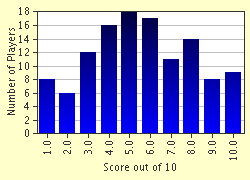Quiz Answer Key and Fun Facts
1. Who exclaimed, 'Solomon, I've surpassed thee' after his 'pet project' was completed in A.D. 537? The quote was a reference to the amount of gold used in this project.
2. Gold turns the greatest of heroes into men of 'loose integrity'! Nothing can illustrate this better than the Greek hero, whose adventure (and its perils) were linked to gold and whose bride-to-be's death also had the element of gold in it. Who was it?
3. Today, we define the purity of gold in carats but it was first used to describe the weight of the gold that was being transacted. Where did this word originate from?
4. Midas, the man with the 'golden touch', is the best example of the lust that gold generates in the mind of mortals. To relieve him of his golden touch, Bacchus (who granted him the wish in the first place) asked him to bathe in a particular river. Which river?
5. Which Lydian king, reportedly showed off his gold to Solon, the famous Greek law-maker and enquired whether the latter had met anyone more fortunate than him?
6. This 'King of Kings' was the first person to stamp his portrait on the official gold coin. He called these coins by his name. Name this 'great' ruler?
7. 'Gold kills'! At least this axiom was literally true for one Roman gentleman, who made his money by organising fire brigades, 'unscrupulous' tenancy deals besides other sources of income. Name this prominent personality who met his end when the Parthians poured molten gold down his throat?
8. When first released, these coins weighed 4.55 gms and were 98% pure. This coin was used in transactions for around 700 years - the longest ever till A.D. 2003. What were these coins called?
9. The Arab Muslims also had a great need for gold. They started using Gold coins (based on the Byzantine currency). The first Gold coins were issued by Caliph Abd el-Melik at Damascus. What were these coins popularly known as?
10. During the 15th century, Europeans used a particular name to call the gold-bearing areas (especially in Africa). Though controversy surrounds the origin of the word, it is still used today, albeit for different reasons. What was the name given to these gold-bearing areas?
Source: Author
ace_sodium
This quiz was reviewed by FunTrivia editor
bloomsby before going online.
Any errors found in FunTrivia content are routinely corrected through our feedback system.

